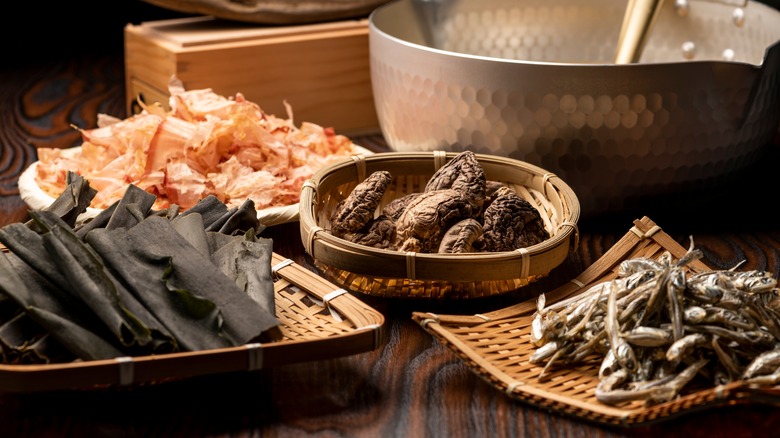The Scientific Origins Of The Word 'Umami'
Umami is the fashionable flavor of the day. What other taste has its own eponymous burger chain? If you think you've heard the word "umami" a lot more in recent years, you're not wrong. Though it was first identified in the early 1900s, it took the international scientific community a century before umami was recognized as the fifth taste in the 2000s, per FiveThirtyEight. Prior to that, there had only been four known tastes: salty, sweet, sour, and bitter. Right now some of you are surely wondering who forgot to add spicy to that list, but spicy isn't really a flavor. According to the InformedHealth.org, it's just a pain signal sent by the nerves in your tongue.
One reason it may have taken so long for people to acknowledge umami as the fifth taste is that it's very tricky to describe. Many sources, including Vox, the Kikkoman soy sauce brand, and InformedHealth.org all use the word "savory" to sum up umami, but that's not very specific either. The New Yorker describes it as a "deep, dark, meaty intensity" present in foods like seared steak, mushrooms, and anchovies. That's as good of a description as you can get because, in reality, the only way to describe umami is "umami." Could the origins of that word provide any more of a clue to the nature of this mysterious taste?
The meaning of umami and the myth of MSG
Kikunae Ikeda really loved soup. The Japanese chemist was such a big fan of dashi, a savory broth made from bonito flakes and kombu seaweed, that he became obsessed with unlocking the secrets of its flavor, says BBC Future. This was in the early 1900s when only four tastes were identified, and Ikeda didn't feel that salty, sour, sweet, or bitter were sufficient to describe the flavor of dashi. Ikeda honed in on the molecular structure of kombu seaweed and identified a particular compound of interest: an amino acid called glutamate. Of course, "glutamate-y" isn't an appealing name for a flavor, so Ikeda had to come up with a name for the fifth taste. He settled on umami, riffing on the Japanese word "umai," which roughly translates to English as "deliciousness," per The New Yorker.
Ikeda published his findings in 1909, though they weren't translated to English until 2002, per BBC Future. Recent research has identified two other molecules associated with umami – inosinate and guanylate – but glutamate remains the most famous, though perhaps infamous would be a better word. The crystalline form of glutamate is known as monosodium glutamate, or MSG. Ikeda developed MSG while researching umami and marketed it in partnership with a seasoning brand. FiveThirtyEight reports that MSG got a bad reputation in the U.S. due to xenophobic attitudes directed at Chinese restaurateurs, but in reality, it's just concentrated umami flavor.

